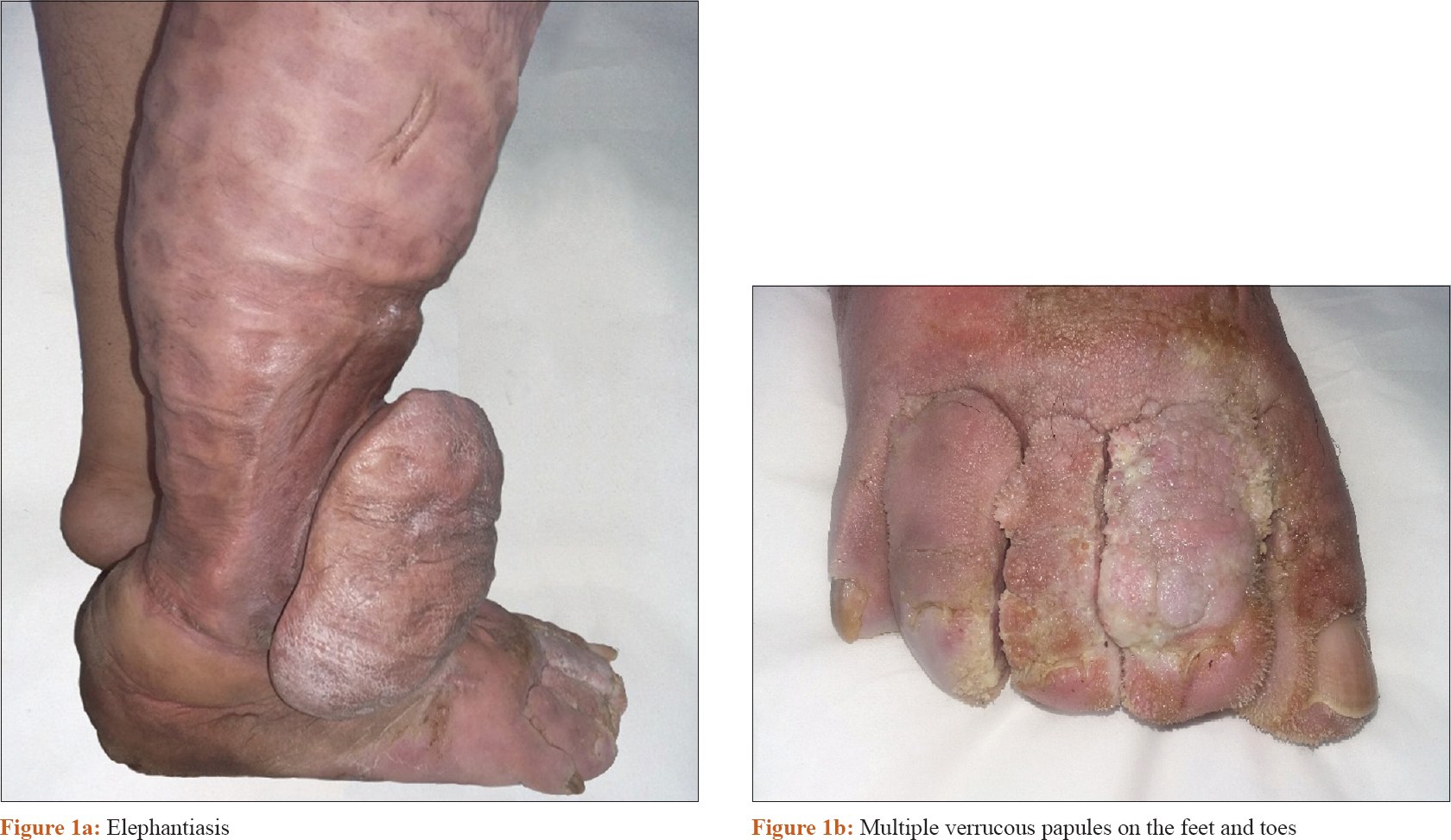Translate this page into:
Papillomatosis cutis lymphostatica
2 Department of Dermatology, Mohammed 6 University Hospital of Oujda; Laboratory of Epidemiology, Clinical Research and Public Health, Medical School of Oujda, Mohammed First University, Oujda, Morocco
Correspondence Address:
Sabah Bazouti
Department of Dermatology, Mohammed VI University Hospital, Mohammed First University, Oujda
Morocco
| How to cite this article: Bazouti S, Dikhaye S, Zizi N. Papillomatosis cutis lymphostatica. Indian J Dermatol Venereol Leprol 2019;85:305-306 |
A 35-year-old man presented to us with primary lymphedema of the right lower limb since the age of 3 years [Figure - 1]a.
 |
| Figure 1: |
Over the last 10 years, he had developed hyperkeratotic, verrucous and papillomatous lesions on the dorsal aspect of his right foot [Figure - 1]b. The lesions were associated with oozing and were malodorous.
Histopathology showed hyperkeratosis, verrucoid acanthosis of the epidermis and dilated lymphatic vessels in the fibrous dermis. Based on the clinical features and histopathology, a diagnosis of papillomatosis cutis lymphostatica was made.
Papillomatosis cutis lymphostatica is a rare manifestation of primary (hereditary) lymphedema. Skin infections can result from fissures in the skin caused by papillomatosis cutis lymphostatica. Options for effective treatment of lymphostatic cutaneous papillomatosis are limited. Compression therapy is important to prevent further progression.
Declaration of patient consent
The authors certify that they have obtained all appropriate patient consent forms. In the form, the patient has given his consent for his images and other clinical information to be reported in the journal. The patient understands that name and initials will not be published and due efforts will be made to conceal identity, but anonymity cannot be guaranteed.
Financial support and sponsorship
Nil.
Conflicts of interest
There are no conflicts of interest.
Fulltext Views
6,814
PDF downloads
3,361





